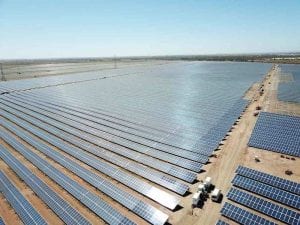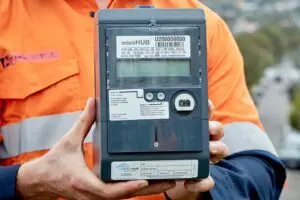Australia needs to triple its transmission capacity to access more low-cost solar and wind and achieve zero greenhouse emissions. Social push-back against transmission can be circumvented by greatly increasing compensation payments to landholders (and neighbours) hosting transmission towers.
Removal of fossil fuels through renewable electrification of nearly everything (via solar and wind) allows an 80% reduction in emissions. Because solar and wind are cheap, this also reduces energy prices.
Electrification of transport (electric vehicles), air and water heating (heat pumps) and industrial heating (electric furnaces) leads to doubling of electricity demand. Electrification of aviation (via synthetic jet fuel), chemicals and metals (via hydrogen from electrolysis) further increase electricity demand, to about triple current demand.
Tripled electricity generation means that transmission must approximately triple, to bring the new solar and wind power into the cities, and also to smooth out local weather via stronger interstate transmission.
Lack of transmission is the largest constraint on rapid deployment of solar and wind. A company wanting to construct a solar or wind farm, a pumped hydro system or battery storage only needs to negotiate with a few land holders. However, transmission companies need to negotiate with dozens to hundreds of land holders.
New transmission needs to be built quickly to reach zero emissions in 2050. This requires social licence if it is to proceed smoothly. In a democracy, the only practical method of facilitating social licence is to ensure that compensation payments are perceived to be fair.
It is obvious that hosts of new transmission towers will be unsatisfied while ever wind turbine hosts receive more compensation. Why should wind and solar farm hosts be paid much more than hosts of the transmission lines running from those wind and solar farms?
Potential wind farm hosts negotiate with companies without the threat of compulsory acquisition. The compensation must be adequate, or permission will be refused. The agreed price is typically far more than the farming value of the alienated land.
In contrast, transmission companies can compulsorily acquire transmission easement rights. Compensation is determined by legislation, for example the NSW Land Acquisition Just Terms Compensation Act.
Transmission companies could offer much higher compensation to ease social pushback and thereby speed the delivery of new transmission. This could also include funds for neighbours and the community. The extra cost would be passed to consumers through regulated prices.
However, wholesale prices would fall, because the additional solar and wind is cheaper than the coal and gas that it replaces. Thus, new transmission effectively costs less than zero.
However, transmission companies can’t easily offer higher compensation to land holders because of 20th Century rules governing regulated transmission. Thus, social pushback delays new transmission. This absurd impasse means that everyone pays higher electricity prices.
The impasse can be readily and quickly resolved by reforming transmission rules. Alternatively, State Governments could bypass the rules (e.g. for Renewable Energy Zones), or could directly provide additional land holder compensation. Fortunately, pegging transmission compensation to windfarm compensation adds little to wholesale electricity costs.
As an example, present transmission rules might result in landholder compensation amounting to 5% of project cost.
Increasing compensation 5-fold adds 20% to transmission cost. In an Australian 100% renewable electricity system, transmission. storage and curtailment each amount to 8-15% of the overall cost. Thus, multiplying landholder compensation five-fold only adds a few per cent to overall electricity costs in a 100% renewable electricity system.
As another example, Project Energy Connect is expected to cost about $2.3 billion for 0.8 Gigawatts (GW) of transmission capacity over 900km.
This amounts to about $3 million per km per GW. Compensation payments to this and similar projects could be substantially increased to $0.5 million per GW-km to gain more rapid social acceptance.
Assuming a 5% real discount rate over a 40-year accounting life, this amounts to about $30,000 per kilometer per year per Gigawatt-capacity (indexed to inflation). This is commensurate with compensation payments to hosts of wind turbines, which are typically spaced apart by a distance of about 1km (depending on size).
Andrew Blakers is Professor of Engineering at the Australian National University.









